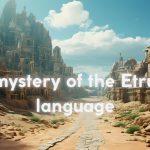-
|

What is the difficulty in translating East Asian languages?
-
|

How are literary works translated?
-
|

Page translation
-
|

Peculiarities of translating fiction
-
|

Peculiarities of writing translation
-
|

How is the text being translated?
-
|

Technical translation from English
-
|

What is important to consider when translating medical documents?
-
|

All the important points when translating legal texts
-
|

Translation of software – features





